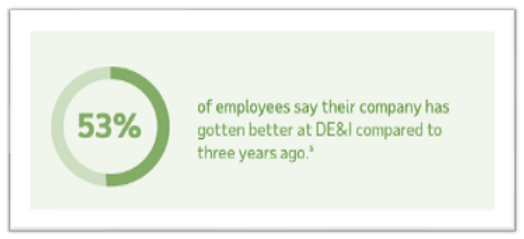Unlocking Inclusion: The Crucial Role of Diversity Training in the Workplace
Imagine a boardroom where voices harmonize from different backgrounds, a mosaic of perspectives painting the canvas of innovation. Now, picture a...
3 min read
 Rhonda Aghaie
:
Jul 8, 2024 10:44:43 PM
Rhonda Aghaie
:
Jul 8, 2024 10:44:43 PM

In the fast-paced world of boardrooms and business endeavors, a subtle but profound crisis lurks—the epidemic of mental health challenges infiltrating every corner of the corporate landscape. As organizations strive for success, the toll on employee well-being often remains veiled, necessitating a closer look at the escalating mental health crisis within the professional realm. According to a recent study by the World Health Organization (WHO), mental health conditions cost the global economy over $1 trillion in lost productivity each year.
epidemic of mental health challenges infiltrating every corner of the corporate landscape. As organizations strive for success, the toll on employee well-being often remains veiled, necessitating a closer look at the escalating mental health crisis within the professional realm. According to a recent study by the World Health Organization (WHO), mental health conditions cost the global economy over $1 trillion in lost productivity each year.
Within the confines of the workplace, the mental health epidemic manifests in stress, burnout, and a decline in overall employee well-being. A survey by the American Institute of Stress found that 80% of workers feel stress on the job, with nearly half stating they need help learning how to manage stress. Employees often grapple with mental health challenges in silence, fearing the stigma attached to discussing their struggles in a professional setting. According to a study by the National Alliance on Mental Illness (NAMI), two-thirds of employees with mental health conditions are afraid to disclose their conditions to their employers. Employers must recognize the role the workplace plays in exacerbating mental health challenges and take proactive steps to create a healthier work environment.
The recent pandemic has added a layer of complexity to the workplace mental health landscape. Remote work, isolation, and the blurred boundaries between professional and personal life have intensified mental health challenges. Over seven out of ten employers (77 percent) noted an increase in mental health issues in their workforce in 2023, a giant leap from 44 percent of employers in 2022.
A holistic approach to workplace mental health involves addressing the challenges and fostering a positive and inclusive work environment. The Harvard Business Review reports that companies with inclusive cultures are high-performing, make quality decisions, behave collaboratively, and skip work less frequently, making employers crucial in fostering a workplace culture that encourages open conversations about mental health, creating an environment where employees feel supported rather than judged.
How can employers have the most significant impact?
Employers must actively engage in initiatives that prioritize employee mental well-being. This includes offering mental health resources, training on recognizing and addressing mental health issues, and promoting a healthy work-life balance. One Deloitte report found that 57% of employees are considering leaving their current jobs for one where companies support employee well-being. Creating a mentally healthy workplace involves implementing supportive measures.
Employee Assistance Programs (EAPs): Establish Employee Assistance Programs that provide confidential counseling services, mental health resources, and support for employees dealing with personal or work-related issues.
Mental Health Training for Managers: Provide training programs for managers to recognize signs of mental health issues, effectively communicate with employees about mental health, and create a supportive work environment.
Flexible Work Arrangements: Offer flexible work schedules, remote work options, or compressed workweeks to help employees manage their work in a way that suits their mental health needs.
Wellness Programs: Implement wellness programs that focus on mental health, including workshops, yoga sessions, meditation classes, and activities that promote overall well-being.
Clear Communication on Benefits: Communicate mental health benefits available to employees, including insurance coverage for therapy or counseling services, mental health days, and other related benefits.
Promote Work-Life Balance: Encourage a healthy work-life balance by setting reasonable expectations for working hours, discouraging excessive overtime, and promoting the use of vacation days.
Create a Safe Space: Foster a workplace culture where employees feel safe discussing mental health concerns without fear of stigma. This can be achieved through open communication and awareness campaigns.
Access to Mental Health Resources: Provide easy access to mental health resources, such as contact information for counseling services, online mental health assessments, and educational materials on managing stress and mental well-being.
Regular Check-ins: Conduct regular one-on-one check-ins between employees and managers to discuss workload, career development, and any challenges they may face, creating a supportive and open line of communication.
The workplace mental health epidemic is not a distant concern—it's a reality that demands the attention and action of employers. By recognizing the impact of mental health challenges, breaking the stigma, and actively prioritizing employee well-being, businesses can navigate this silent crisis and create workplaces where individuals thrive personally and professionally. The path forward involves addressing the challenges and actively promoting a workplace culture that values and prioritizes mental health. It's time for employers to unveil the workplace mental health epidemic and lead the way towards a healthier and more productive work environment.

Imagine a boardroom where voices harmonize from different backgrounds, a mosaic of perspectives painting the canvas of innovation. Now, picture a...
Imagine this scenario: your workplace embraces transparency (either proactively or based on new state regulations), and the curtains are drawn back...

As organizational culture is multifaceted, we aim to delve into different facets of leadership's nuanced and pivotal role in shaping and sustaining a...